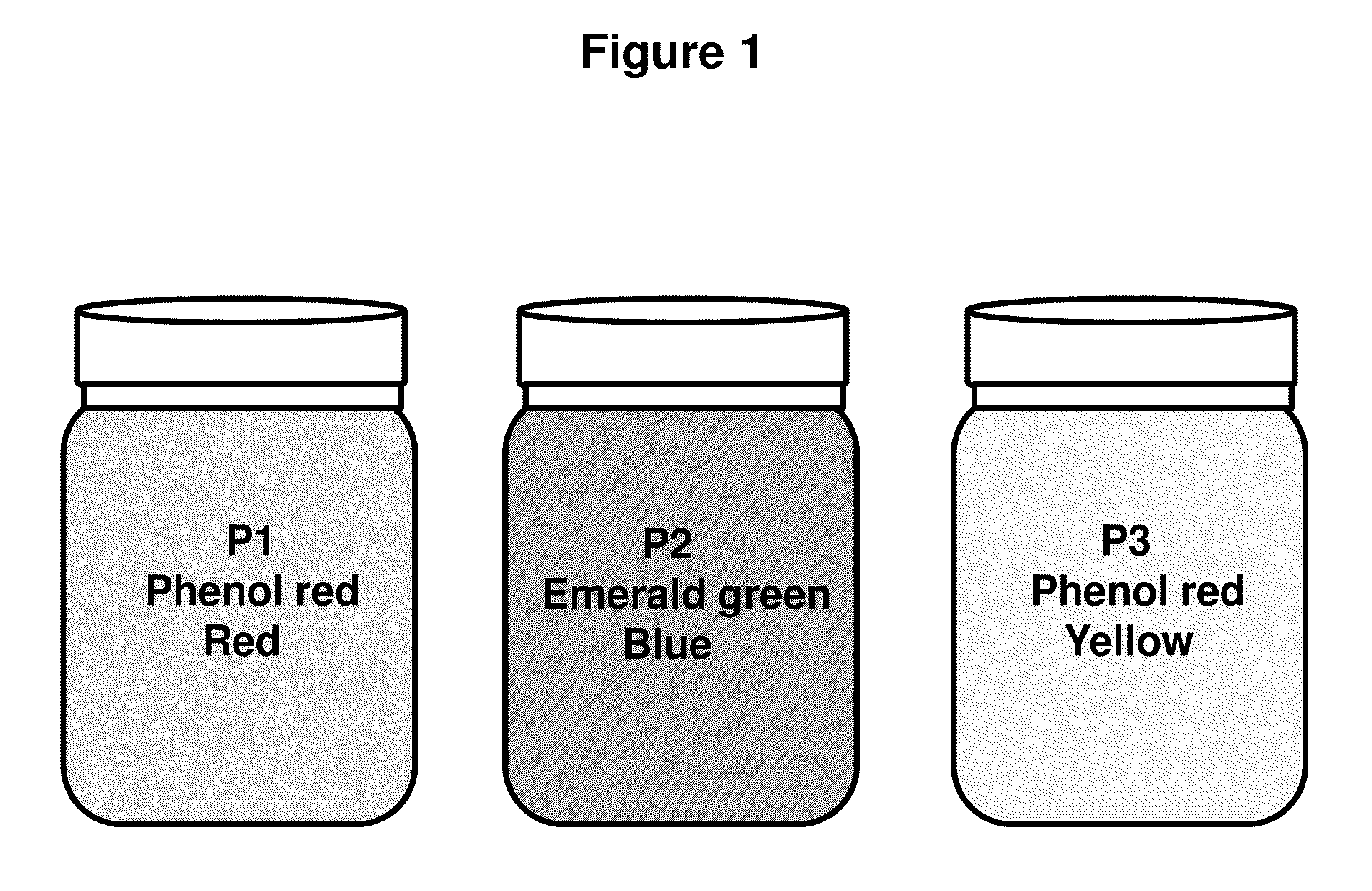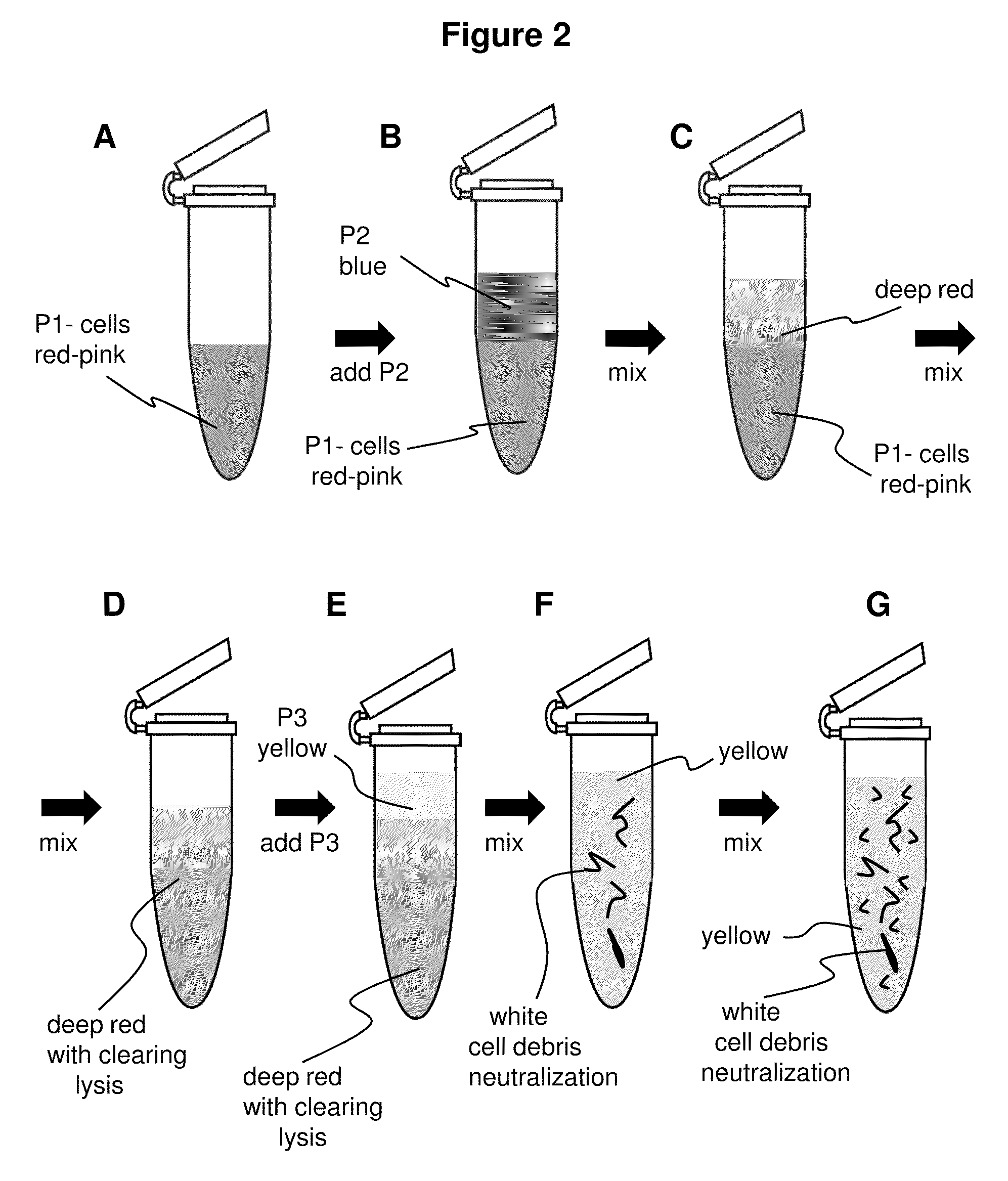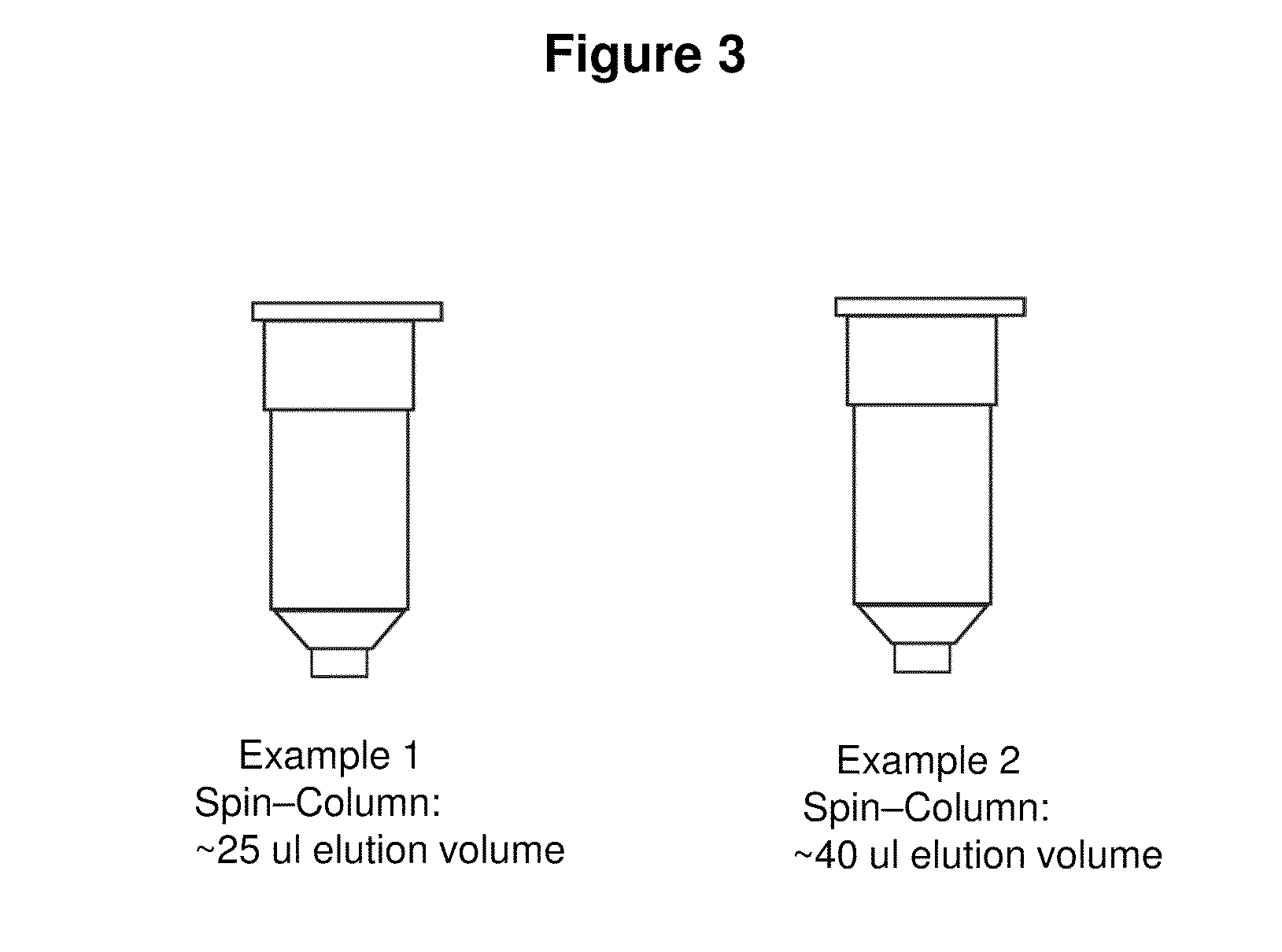Isolation of nucleic acid using colored buffers
a nucleic acid and color technology, applied in the field of color buffer isolating nucleic acid, can solve the problems of inferior nucleic acid products and poor execution, and achieve the effect of optimizing the bacterial lysis and neutralization steps, improving the efficiency of lysis and neutralization, and fast, reliable and efficien
- Summary
- Abstract
- Description
- Claims
- Application Information
AI Technical Summary
Benefits of technology
Problems solved by technology
Method used
Image
Examples
example 1
Preferred Embodiment
Spin-Column (Modified Low Volume Elution)
[0048]1. Pellet 0.5-5 ml of overnight culture in a 1.5 ml microfuge tube by spinning for 15-20 seconds.[0049]2. Discard the supernatant.[0050]3. Add 200 ul of P1 buffer (red), containing RNAse A (100 ug / ml). Resuspend completely with gentle vortexing or by pipette. Solution is pink or light red in color to the naked eye.[0051]4. Add 200 ul of P2 buffer (blue). Mix by inverting and swirling the microfuge tube 4-6 about times. The solution becomes clear and a deeper red in color. If lysis is incomplete the clearing and darkening to a red of the color is qualitatively less pronounced to the naked eye.[0052]5. Add 400 ul pf P3 buffer (yellow) and mix thoroughly, but gently. Do not vortex this step hard. A white precipitate will form which consists of K-SDS and cellular debris. The buffer becomes yellow and cleared debris suspension.[0053]6. Spin the microfuge tube for 3 minutes at maximum speed.[0054]7. Load the supernatant in...
example 2
Preferred Embodiment
Spin-Column (Standard: Microfuge or Vacuum Elution)
[0059]1. Pellet 0.5-5 ml of overnight culture in a 1.5 ml microfuge tube by spinning for 15-20 seconds.[0060]2. Discard the supernatant.[0061]3. Add 200 ul of P1 buffer (red). Resuspend completely with gentle vortexing or by pipette. Solution becomes pink or light red in color to the naked eye.[0062]4. Add 200 ul of P2 buffer (blue). Mix by inverting and swirling the microfuge tube 4-6 about times. The solution becomes clear and a deeper red in color. If lysis is incomplete the clearing and darkening to a red of the color is qualitatively less pronounced to the naked eye.[0063]5. Add 400 ul pf P3 buffer (yellow) and mix thoroughly, but gently. Do not vortex this step hard. A white precipitate will form which consists of K-SDS and cellular debris. Shaking the tube inverted several times increases the efficiency of precipitate formation.[0064]6. Spin microfuge tube for 3 minutes.[0065]7. Load the supernatant intro ...
example 3
Short Procedure
Alternative Embodiment
[0070]1. Pellet 0.5-5 ml of overnight culture. Discard supernatant.[0071]2. Add 200 ul of P1 buffer (red) and resuspend pellet, becomes light red or pink.[0072]3. Add 200 ul of P2 buffer (blue) and mix, becomes deeper red and clear to the naked eye.[0073]4. Add 400 ul of P3 buffer (yellow) and mix thoroughly, white cellular precipitate forms.[0074]5. Spin full speed for 3 minutes.[0075]6. Load supernatant to the spin-column.[0076]7. Spin the column with the collection tube for 30 sec.[0077]8. Discard the flow-through.[0078]9. Add 600 ul of Wash buffer and spin for 30 sec.[0079]10. Add 40 ul (25 ul) of Elution Buffer or water, put the column into a new microfuge tube, and spin for 10 sec.
PUM
| Property | Measurement | Unit |
|---|---|---|
| pH | aaaaa | aaaaa |
| pH | aaaaa | aaaaa |
| pH | aaaaa | aaaaa |
Abstract
Description
Claims
Application Information
 Login to View More
Login to View More - R&D
- Intellectual Property
- Life Sciences
- Materials
- Tech Scout
- Unparalleled Data Quality
- Higher Quality Content
- 60% Fewer Hallucinations
Browse by: Latest US Patents, China's latest patents, Technical Efficacy Thesaurus, Application Domain, Technology Topic, Popular Technical Reports.
© 2025 PatSnap. All rights reserved.Legal|Privacy policy|Modern Slavery Act Transparency Statement|Sitemap|About US| Contact US: help@patsnap.com



